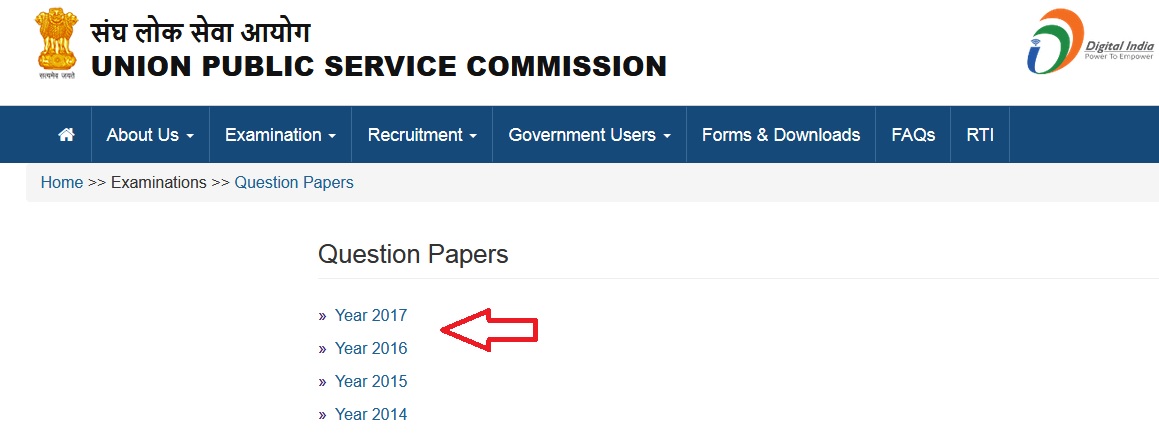upsc.gov.in Combined Medical Services Exam General Ability, General Medicine & Paediatrics Question Paper : Union Public Service Commission
Organization : Union Public Service Commission
Exam : Combined Medical Services Exam
Year : 2011
Subject : General Ability, General Medicine & Paediatrics
Document Type : Previous Question Papers
Location : India
Website : upsc.gov.in
Download Model/Sample Question Paper : https://www.pdfquestion.in/uploads/upsc.gov.in/7111-GENERAL_ABILITY.pdf
UPSC General Medicine Paediatrics Paper
TEST BOOKLET :
PAPER — I :
Maximum Marks : 250
Related : UPSC Civil Services Preliminary Exam Question Paper : www.pdfquestion.in/6562.html
Instructions
1. IMMEDIATELY AFTER THE COMMENCEMENT OF THE EXAMINATION, YOU SHOULD CHECK THAT THIS TEST BOOKLET DOES NOT HAVE ANY UNPRINTED OR TORN OR MISSING PAGES OR ITEMS ETC. IF SO, GET IT REPLACED BY A COMPLETE TEST BOOKLET.
2. ENCODE CLEARLY THE TEST BOOKLET SERIES A, B, C, OR D AS THE CASE MAY BE IN THE APPROPRIATE PLACE IN THE ANSWER SHEET.

3. You have to enter your Roll Number on the Test Booklet in the Box provided alongside. DO NOT write anything else on the Test Booklet.
4. This Test Booklet contains 120 items (questions). Each item comprises four responses (answers). You will select the response which you want to mark on the Answer Sheet. In case you feel that there is more than one correct response, mark the response which you consider the best. In any case, choose ONLY ONE response for each item. You have to mark all your responses ONLY-on the separate Answer Sheet‘provided. See directions in the Answer Sheet.
5. All items carry equal marks.
6. Before you proceed to mark in the Answer Sheet the response to various items in the Test Booklet, you have to ?ll in some particulars in the Answer Sheet as per instructions sent to you with your Admission Certi?cate.
7. After you have completed ?lling in all your responses on the Answer Sheet and the examination has concluded, you should hand over to the Invigilator only the Answer Sheet.
8. You are permitted to take away with you the Test Booklet.
9. Sheets for rough work are appended in the Test Booklet at the end.
Penalty for wrong answers :
THERE WILL BE PENALTY FOR WRONG ANSWERS MARKED BY A CANDIDATE IN THE. OBJECTIVE TYPE QUESTION PAPERS. .
(i) There are four alternatives for the answer to every question. For each question for which a wrong answer has been given by the candidate, one-third (0-33) of the marks assigned to that question will be deducted as penalty.
(ii) If a candidate gives more than one answer, it will be treated as a wrong answer even if one of the given answers happens to be correct and there will be same penalty as above to that question.
(iii) If a question is left blank, i.e., no answer is given by the candidate, there will be no penalty for that question.
Model Questions
1. A 38-year-old man presents with chest pain and shortness of breath. His pulse rate is 85/min, blood pressure is 180/118 mmHg and the ‘cardiac auscultation reveals an ejection systolic murmur. The ECG’ shows LVH pattern and ST depression in the anterior leads. His Troponin T test is positive. The echocardiogram of the person is likely to reveal
ia) Aortic regurgitation
(b) Aortic stenosis
(c) Mitral regurgitation
(d) Mitral valve prolapse
2. A young woman in the mid-205 with abnormally low body weight reports binge eating and purging 5- 10 times a week for the last several years. She has intense fear of becoming fat and has a feeling that she is fat despite an objectively low weight. She has also developed amenorrhoea. What is the most appropriate diagnosis ?
(a) Anorexia nervosa
(b) Bulimia nervosa
(c) Endogenous depression
(d) Schizophrenia
3. A patient is admitted with severe diarrhoea and vomiting. On examination, he is hypotensive and dehydrated. His haemoglobin is 19 gm%. The most likely reason for raised haemoglobin is
(a) Relative polycythaemia
(b) Secondaryr polycythaemia
(c) Polycythaemia vera
(01) Essential thrombocythaemia
4. Consider the following statements :
During an acute attack of asthma :
1. Pulsus paradoxus develops when the FEV1 is less than 25 per cent of the predicted value.
2. A normal to increased PaCO2 signals a severe airway obstruction and impending respiratOry failure.
3. The arterial PaCO2 decreases and the arterial pH increases.
4. The presence of cyanosis is a reliable prognostic sign.
Which of the statements given above are correct ?
(a) 1, 2 and 3
(b) 2, 3 and 4
(c) 1, 3 and 4
(d) 1, 2 and 4
5. A 30-year-old man presents with fever and progressively increasing breathlessness since the last two weeks. His clinical examination reveals: pulse 120/min regular, BP 100/60 mmHg, and muffled S1 and $2 heart sounds. The distended jugular vein has a rapid X descent, with an absent Y descent. What is the probable diagnosis?
(a) Right ventricular failure
(1)) Constrictive pericarditis
(c) Cardiac tamponade
(d) Left ventricular failure